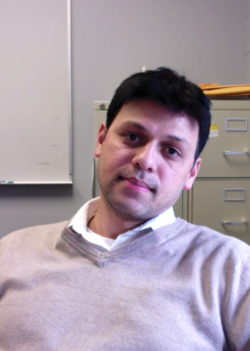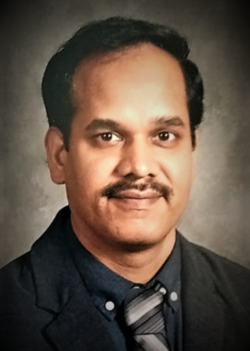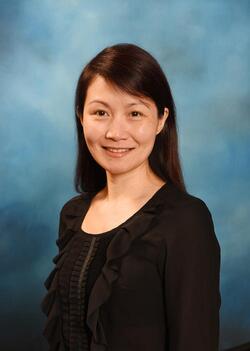Major and Career Exploration in Health (CPBL 103/FNDS 103)
This is a practice-based learning course. Practice-Based Learning (PBL) focuses on applying what is being learned and learning by doing. In this course, students will work in teams to address an applied problem within the theme of Health and Community.
Course Project:
Students will work together and use nanotechnology to design therapeutic strategies for human disease within the realm of personalized medicine.
Nanomedicine is an emerging interdisciplinary field which involves the development and application of nanoscale particles (typically 1 to 100 nanometers) to health and modern medicine. Students will be taught how the biological machinery inside living cells is built and operates. The course project will focus on using this information to synthesize nanoscale structures that could be applied to treating diseases such cancer and traumatic brain injury.
Instructors from cell physiology, neurobiology, chemistry, and biophysics will teach this course.

More about this course
Nanomedicine at UM-Dearborn is a 3-tier interdisciplinary program, team taught by researchers and teachers with expertise in cellular physiology, neuroscience, biophysics, materials chemistry, and clinical medicine. This course is a part of tier 1 and will introduce the students to the field of nanomedicine and explore the various career trajectories one could pursue in this field, while engaging in hands-on interdisciplinary learning.
Course number: CPBL 103
Number of Credits: 4
Search UM-Dearborn Class Schedule to find out more.
Dearborn Discovery Core requirements met: Critical and Creative Thinking
Meet your faculty members:
Kalyan Kondapalli, Associate Professor of Biology; Suvranta Tripathy, Assistant Professor of Physics; Elena Zhang, Assistant Professor of Neurobiology; and Krisanu Bandyopadhyay, Professor of Chemistry
One of the benefits of taking a Practice-Based Learning course is gaining faculty mentors that can support you throughout your college career. Get to know Kalyan Kondapalli, Suvranta Tripathy, Elena Zhang and Krisanu Bandyopadhyay, faculty members for Major and Career Exploration in Health and Community.

Cell physiology and biochemistry is what I’m passionate about.
Whether you spent hours trying to build structures with LEGOs or used building blocks to create anything in Minecraft or Roblox, you will surely appreciate the organization of more than 30 trillion cells to create the complex structure called “human body”. In essence, we are all nothing but a bunch of cells. However, these cells are not assembled randomly, but systematically put together. Moreover, there is constant communication between the cells in our body (I call this the social networking of cells) which guides how individual cells function. What happens within the cells, and how they respond to other cells in the network dictates human health and disease. The inner workings of the cell happen at a nanoscale (one billionth of a meter).
While understanding these inner workings of the cell is what drew me to this field, more recently I have started drawing on this natural nanoscale of biology to design precise, personalized therapies for a specific type of brain cancer. To achieve these goals, I collaborate with some awesome colleagues, who will also teach this course with me!
Have questions about this course? Email Prof. Kondapalli.

I am a biophysicist interested in traffic control in cells. The cellular transportation system that maintains the structure, growth and health of a cell is regulated by molecular motor proteins (Vehicles for cell), microtubule filaments (roads in cell) and Adenosine Triphosphate (ATP–the fuel in cell). These motor proteins are responsible for transporting pathogens as well as nanoparticles used for drug delivery into cells. My lab recreates the cellular transport system in-vitro (outside of cell) at a single to ensemble of motor proteins and characterize the biophysical properties using an interdisciplinary approach that exploits cutting edge optical tweezer technology. Combining in-vitro studies with various biological processes involving cellular transport and with further development of theoretical models provide insights into cellular mechanisms and pathways.
I am greatly looking forward to bringing the highly interdisciplinary research approaches involving physics, biology, biochemistry, programming, and statistical methods into the project-based learning methods while investigating approaches in transporting nanomedicine into living cells.
Have questions about this course? Email Prof. Tripathy.

I am a neurobiologist. My favorite thing is to study the nervous system and its function in normal brain development and under diseased conditions.
With a MD in Clinical Medicine and PhD in Neuroscience, my passion is to solve mind-blowing problems in the field of pediatric brain injuries. Nanomedicine uses cutting-edge knowledge and tools for the prevention and treatment of disease. By bridging nanomedicine and neuroscience, I am excited to evaluate the therapeutic efficacy of nanomedicines in the treatment of pediatric brain injuries!
If you are as excited as me, let’s start the journey together!
Have questions about this course? Email Prof. Zhang.

I am known as Dr. B among my students and have been at UM-Dearborn for more than 16 years. I love teaching chemistry, applying my chemistry skills in cooking, and exploring food from different cuisines.
In my research, I utilize the principle of self-assembly to control the properties of surfaces used for specific applications. The primary research focus is to design and characterize functionalized surfaces with a major emphasis on novel nanomaterial synthesis and bio-molecular recognition. Motivation for this research is the need to understand and create nanostructures with nanomaterials such as carbon nanotubes, metal nanoshells, nanometer scale biomolecules like DNA and proteins. These nanostructures are expected to have potential applications in the design of bioactive surfaces and serve as a platform for novel material synthesis and applications.
I am particularly interested in working at the interface of chemistry, material science and biology which leads to my collaboration with my colleagues from cell biology, neurobiology, and biophysics. In my laboratory, we are currently involved in synthesis of gold/silica core–shell nanostructures which has a unique photo-physical properties that can be tuned from ultraviolet–visible (UV-Vis) to near-infrared (NIR) range by changing the ratio of core diameter to shell thickness. Due to their unique ability to absorb and disperse NIR radiation, metal nanoshells have found application towards cancer remediation. Fabrication of these types of nanostructures, capable of absorbing electromagnetic radiation in a narrow range of 700–900 nm, is particularly important for such applications. It is possible to locally heat cancer tissues and destroy them by using appropriate electromagnetic radiation in combination with specific core–shell nanoparticles.
Have questions about this course? Email Prof. Bandyopadhyay.

